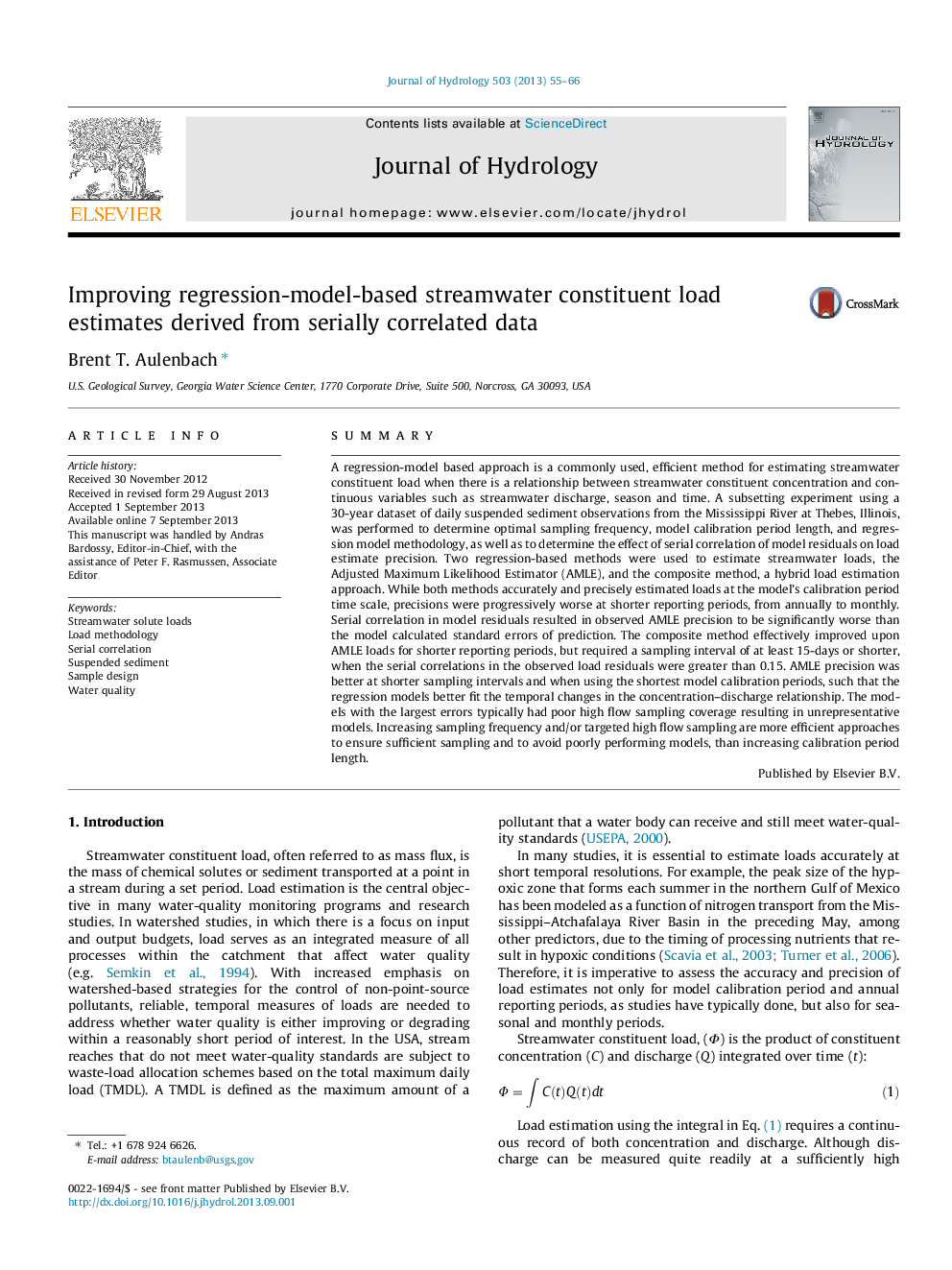| Article ID | Journal | Published Year | Pages | File Type |
|---|---|---|---|---|
| 4576185 | Journal of Hydrology | 2013 | 12 Pages |
•Load estimate precisions are progressively worse for shorter reporting periods.•The composite method improved load precisions for sampling frequencies ⩽15 days.•Model residual serial correlation causes underestimates of the observed load variance.•Poor load models typically have poor high flow sampling coverage.
SummaryA regression-model based approach is a commonly used, efficient method for estimating streamwater constituent load when there is a relationship between streamwater constituent concentration and continuous variables such as streamwater discharge, season and time. A subsetting experiment using a 30-year dataset of daily suspended sediment observations from the Mississippi River at Thebes, Illinois, was performed to determine optimal sampling frequency, model calibration period length, and regression model methodology, as well as to determine the effect of serial correlation of model residuals on load estimate precision. Two regression-based methods were used to estimate streamwater loads, the Adjusted Maximum Likelihood Estimator (AMLE), and the composite method, a hybrid load estimation approach. While both methods accurately and precisely estimated loads at the model’s calibration period time scale, precisions were progressively worse at shorter reporting periods, from annually to monthly. Serial correlation in model residuals resulted in observed AMLE precision to be significantly worse than the model calculated standard errors of prediction. The composite method effectively improved upon AMLE loads for shorter reporting periods, but required a sampling interval of at least 15-days or shorter, when the serial correlations in the observed load residuals were greater than 0.15. AMLE precision was better at shorter sampling intervals and when using the shortest model calibration periods, such that the regression models better fit the temporal changes in the concentration–discharge relationship. The models with the largest errors typically had poor high flow sampling coverage resulting in unrepresentative models. Increasing sampling frequency and/or targeted high flow sampling are more efficient approaches to ensure sufficient sampling and to avoid poorly performing models, than increasing calibration period length.
